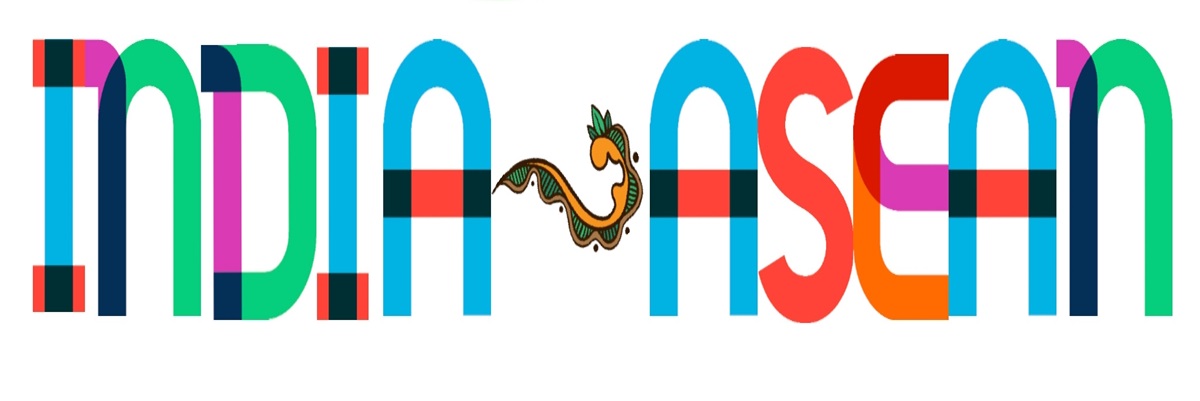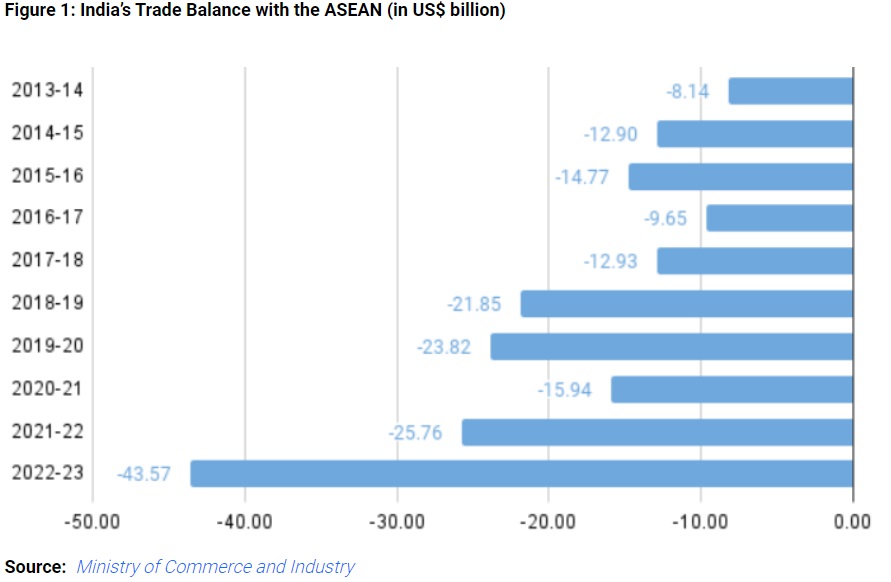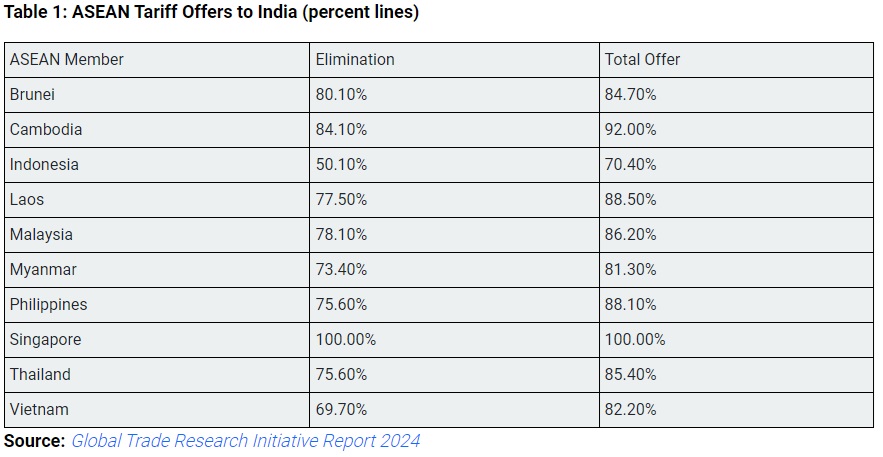Energy & Economics
India's evolving trade strategy with ASEAN

Image Source : Shutterstock
Subscribe to our weekly newsletters for free
If you want to subscribe to World & New World Newsletter, please enter
your e-mail
Energy & Economics

Image Source : Shutterstock
First Published in: Aug.31,2024
Oct.14, 2024
The AIFTA and CECA have increased India-ASEAN trade, but recent talks aim to address trade imbalances and adjust tariffs for improved Indian export access.
India's Act East Policy, initiated in the early 1990s (previously Look East Policy), is a cornerstone of India's foreign policy to strengthen economic, strategic, and cultural ties with the Asia-Pacific region, particularly Southeast Asia. Free Trade Agreements (FTAs) play a central role in this strategy. India's approach to trade policies, particularly in FTAs with the Association of Southeast Asian Nations (ASEAN), reflects a complex balancing act between protecting domestic industries and fostering international trade partnerships.
The India-ASEAN Free Trade Area (AIFTA), established in 2009, aimed to enhance economic cooperation by offering tariff concessions on goods traded between India and ASEAN countries. However, recent talks have focused on revising tariff structures to address disparities and improve trade flows, highlighting India's commitment to deepening economic engagement with ASEAN for mutual benefits and regional integration.
To be sure, ASEAN remains a crucial trading partner for India, accounting for 11 percent of its global trade, with bilateral trade reaching US$ 122.67 billion during 2023-24. The India-ASEAN Comprehensive Economic Cooperation Agreement (CECA) comprises three key agreements covering Goods, Services, and Investment. India’s trade with ASEAN experienced astounding growth after signing the ASEAN-India Trade in Goods Agreement (AITIGA). However, the trade disproportionately benefits the ASEAN region. Between FY 2009 and FY 2023, imports from ASEAN to India grew by 234.4 percent while exports from India rose only by 130.4 percent, expanding India’s trade deficit from US$ 7.5 billion annually when the agreement was enacted in 2011 to approximately US$ 44 billion in 2023.

The potential adjustment of tariffs is influenced by the need to protect burgeoning sectors within India's economy, aligning with the government's “Make in India” initiative to transform India into a global manufacturing hub. For instance, raising tariffs on mobile phone parts and automobile components could incentivise domestic production and reduce import dependency. In the goods trade category, India eliminated import duties on approximately 74 percent of tariff lines and reduced duties on an additional 14 percent of tariff lines—highlighting one consolidated offer to ASEAN. At the same time, each ASEAN member made separate offers to India. This asymmetry in negotiation power also hinders India’s flexibility in protecting vulnerable domestic industries from competitive ASEAN imports.

ASEAN economies are inherently export-oriented with flourishing manufacturing bases. In contrast, India’s economy is significantly service- and agriculture-oriented, and it has not fully capitalised on the FTA, resulting in higher penetration of ASEAN countries into the Indian market. Indian exports have struggled to gain similar traction in ASEAN countries. Moreover, the inverted duty structure on certain items, like ferroalloys, aluminium, copper pipes and tubes, textile staple fibres, and several chemical preparations, puts Indian industries at a disadvantage.
To boost local manufacturing, India has implemented specific measures such as Production-Linked Incentive (PLI) schemes, higher import tariffs, and import monitoring, but several trade agreements negotiated earlier are seen as impediments. Domestic firms in India, particularly in the electronics and automotive sectors, have pressured the government to raise import tariffs to protect local industries, rooted in the desire to safeguard domestic manufacturers from cheaper imports and promote self-reliance and technological advancements. The implications of such tariff hikes extend beyond immediate economic protection. By fostering a robust industrial base, India can create jobs, stimulate economic growth, and enhance technological innovation. However, it is crucial to implement these measures in a way that does not significantly disrupt trade relations in the region.
India-ASEAN trade talks
The 5th meeting of the AITIGA Joint Committee at the ASEAN Secretariat in Jakarta, Indonesia, in July 2024 marked a significant step forward in strengthening economic cooperation between India and ASEAN where all eight sub-committees focused on market access, rules of origin, standards, sanitary measures, and trade facilitation. India will host the next round of negotiations to review the AITIGA in November 2024 to address the pending concerns involving the reciprocity of trade benefits between India and ASEAN.
One of the primary concerns is the trade imbalance between India and its FTA partners. To address this imbalance, India seeks greater market access for its goods, particularly in the automotive and agricultural sectors. For instance, India aims to enhance exports of automobiles and agricultural products to ASEAN countries, aligning with its strategic economic goals despite challenges.
Reducing non-tariff barriers is another critical issue. Non-tariff barriers, such as stringent customs procedures and regulatory hurdles, impede smooth trade flows and increase business costs. Simplifying these procedures and ensuring compliance with international standards can facilitate more accessible trade between India and its FTA partners. For example, streamlining customs procedures for agricultural exports can help Indian farmers access new markets in ASEAN countries.
The ASEAN bloc has already expressed concerns about India’s Customs (Administration of Rules of Origin under Trade Agreements) Rules, 2020 (CAROTAR 2020), which they believe hinder their exports. Indian negotiators also push for tariff cuts in various sectors, including chemicals, metals, textiles, and gems, while addressing non-tariff barriers imposed by ASEAN, such as strict food certification requirements. The outcome of these negotiations will be pivotal in reshaping India-ASEAN trade dynamics.
Revising the sensitive and exclusion lists to ensure fair trade practices while protecting vulnerable domestic industries will also be a crucial point of negotiation. This revision can help balance the interests of domestic manufacturers with the need to adhere to international trade commitments. Enhancing the transparency and predictability of trade practices, including establishing consistent and transparent trade policies, will be essential to foster a more robust trade relationship.
Finally, by engaging with ASEAN through comprehensive trade agreements like AIFTA and CECA, India aims to boost economic cooperation and solidify its geopolitical influence in the region. India’s efforts to balance protectionism with regional integration reflect its broader economic strategy. For example, the “Atmanirbhar Bharat” (Self-Reliant India) initiative emphasises self-reliance and domestic manufacturing while seeking to integrate India into the global economy by enhancing its trade relationships. This strategy can ensure that India remains competitive in the global economy.
First published in :

Soumya Bhowmick is an Associate Fellow at the Centre for New Economic Diplomacy at the Observer Research Foundation. His research focuses on sustainable development and globalisation economics. He is pursuing his PhD and holds a double master’s degree in economics from Jadavpur University, Kolkata, and the University of Antwerp, Belgium (specialisation in the Economics of Globalisation and European Integration). He was previously awarded the Government of Japan’s JASSO Scholarship, the Tokyo Foundation’s SYLFF Fellowship, and the European Commission’s EMJMD Fellowship.
Soumya has published multiple papers in various peer-reviewed journals and is a regular contributor to platforms like The Hindu Business Line, Economic and Political Weekly, The Diplomat, Council on Foreign Relations, The Telegraph, Firstpost, Dhaka Tribune, East Asia Forum, Fortune India, The Quint and India Today, among others.

Tanisha Paul is a Research Intern at the Observer Research Foundation
Unlock articles by signing up or logging in.
Become a member for unrestricted reading!